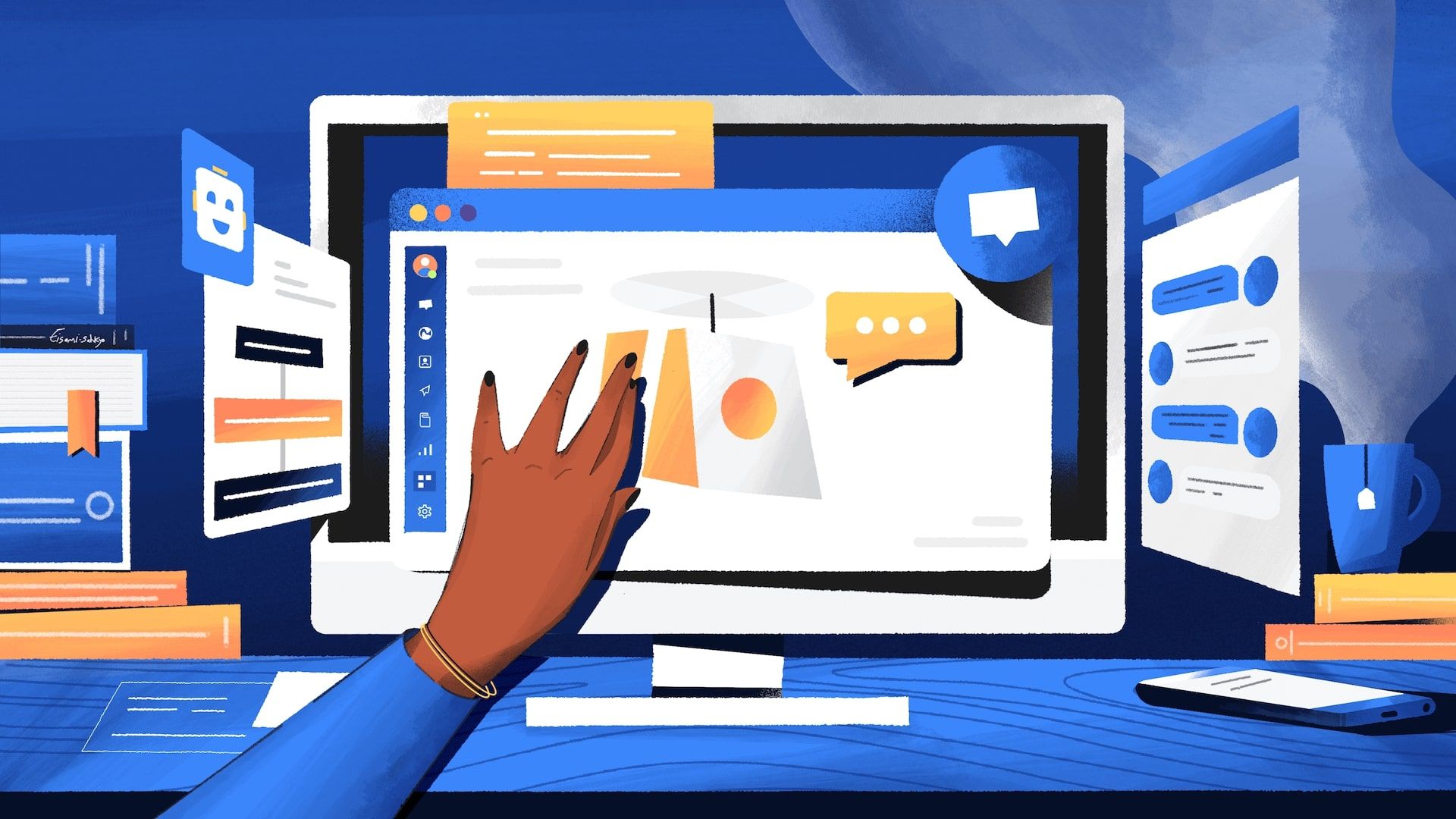AI Chatbots.
It's a word you've heard a lot over the end of 2022 and the beginning of 2023. And guess what? It's just the start of a new era: generative AI.
Whether it is through ChatGPT and the groundbreaking work released by OpenAI, by using Bard, or any other ChatGPT open-source alternative, released over the past months.
Chatbots are software applications that tend to automate humans' work through conversational experiences. Historically, chatbots used to be scripted, following pre-designed rules to fake humans' behavior and answer basic customer questions.
With the artificial intelligence revolution, chatbots now take advantage of artificial intelligence(AI) and natural language processing(NLP). Thanks to machine learning, bots can now learn from previous conversations to offer a human-like experience.
Chatbots can be installed on a website to target special audiences and engage in conversations, but can also be virtual assistants to help with day-to-day productivity, or conversational agents to offer voice and text assistance.
Chatbots are tools that are getting more and more traction from businesses around the world. However, buying the right chatbot software isn't easy.
Through this guide, we will help your company to benefit from our knowledge and use it to buy from the best vendor out there.
How does chatbots work?
Historically, chatbots used to process words or voices to offer the best answer. They weren't learning from previous experiences. Because bots are used (and are still) to be scripted.
Scripted chatbots work as the following:
- Get the conversation context and the type of question.
- Analyze the answer brought through the conversation and behave as pre-defined in the script.
- Send the pre-defined answer.
Recently, with innovations related to ChatGPT and the work from OpenAI, a lot of attention has been brought to chatbots powered by artificial intelligence. Bots powered by machine learning are working differently from their old brothers.
AI Chatbots works as the following:
- Analyze the message sent based on a Large Language Model (LLM) trained with a large and specific dataset.
- Parse the correct answer to be sent based on previous experiences.
- Use AI features such as sentiment analysis to send the best answer.
But honestly, there is still some space for scripted chatbots and simple conversational experiences.
There's now an AI chatbot for everything, in addition to the website chatbot we used to know:
- Content writing chatbot
- Messaging Chatbot
- Recipe chatbot
- Auto-complete coding chatbot
But with the explosion of artificial intelligence and all the benefits it brings to chatbots, AI chatbots are going to take over the consumer and business world in the next few years.
Why are chatbots and AI chatbots important?
In the beginning, chatbots were called "chatterbots" and were aimed at mimicking human conversation. The term, created by Michael Mauldin, was an attempt at describing conversation experiences.
Initially created for the consumer industry, companies have started to take advantage of chatbots as the buying process has moved a lot to online research over the past decades.
Nowadays, buyers prefer to research products and services on their own, online and expect companies to offer seamless, fast, and qualitative experiences. As shown in a large number of studies, buyers are facing blockers:
- Websites are hard to navigate
- It's hard to get an answer to basic questions
- Emergency matters are hard to raise
As the buying experience is more and more complex, making things easy from the digital to the physical world is a major improvement for every business.
Chatbots, whether they are scripted or AI-based, can help companies improve the experience by providing a new medium of communication. Bots also offer a tremendous opportunity for companies to get closer to the people who are waiting for help.
AI chatbots are an incredible opportunity for companies to step-up their customer's customer experience through world-class conversational experiences; with all the benefits chatbots can bring.
All in all, offering a great chatbot experience is a way to gain a competitive advantage over its competitors.
What is a chatbot or an AI chatbot used for?
With customers' expectations gaining new highs, innovative companies have to find better and new ways to nail their targets.
Improving sales, customer service, or marketing with a team of humans, might be easy, but at some point, they need to sleep, eat, and do something else than work.
And it's normal! After all, only your children will remember you worked late every day.
Still don't have any use case in mind? Here is a list of use cases shared by brands that have adopted chatbots to help them scale their conversational experience:
- Engage automatically with the people browsing your website: perfect for the marketing and sales team to engage and track customers' journeys.
- Track customers' behavior to personalize interactions: fits with customer service, sales, and marketing as they don't have to ask for identification anymore.
- Provide support during out-of-office hours: This may be one of the best chatbot use cases for customer support.
- Product recommendations during the buying process: Easy and dead simple product recommendations based on the conversational experience, perfect for B2C sales such as e-commerce.
- Improve sales' velocity with faster time-to-signature: Instead of waiting for your sales to wake up, the bot qualifies and serves the right content to answer leads' questions.
- Generate images automatically from a simple prompt: No more infinite calls with designers and agencies, generative AI can create the perfect image in seconds.
- Write emails, product updates, and internal notes faster: Bots can now help you to be more productive by writing all things related to your business activity.
- Get programming language completion and code recommendations: When coding, humans can benefit from advice and help from bots to make sure they write the best code.
- Search information through search engines: With the recent announcements shared by Google, and the creation of a new word: Search Generative Experience (SGE), search engines are becoming answer engines, through conversational experiences.
Not only AI chatbots are impacting departments within companies, but they are also used largely in different industries, such as e-commerce, travel, or SaaS, for customer-facing use cases or internal use cases.
What are the common errors with AI Chatbots?
The release of ChatGPT in December 2022 sparked a new world where artificial intelligence was available to every company.
What many believed impossible was now possible: robots powered by artificial intelligence, capable of answering all sorts of questions, in little to no time.
However, most of the attempts done with the aim to create a powerful AI Chatbot using LLM trained on public data are rather... Poor.
Because the dataset used to train ChatGPT is using CommonCrawl, it is very good at answering questions like troubleshooting iPhone issues but not for business-related questions such as "Do you provide payment through wire transfer?"
Baptiste Jamin, CEO at Crisp, shares 3 big mistakes they made while creating an AI chatbot, and here they are:
- Using ChatGPT as a single source of truth will create dangerous AI hallucinations.
- Training a model from scratch is not something you should imagine considering the pace of innovation and the cadence of release generated by the open-source community regarding large language models.
- The real added value of LLMs is not to solve dummy questions because these problems could already be solved with better documentation or simply a better product UI.
Compare the best chatbot vendors with AI features
Comparing one chatbot vendor to another can be complex when you want to understand what makes one different from another.
With more than 368 chatbot companies on the market, it can be hard to compare each of them.
Using different sources and curated market knowledge, you can now easily compare major chatbot vendors.
In our opinion, here are the different criteria you should analyze when choosing your next chatbot solution:
- Interface review: The different possibilities offered by the chatbot UI
- Type of blocks review: the different types of chatbot behavior offered by the features
- Channel review: The channels available to be connected to the bot
- NLP features: The ability to connect an AI model or a pre-trained model to the chatbot
What questions should you ask a chatbot vendor?
When you want to buy chatbot software, it is important to carefully study the different alternatives available on the market. As seen by G2.Com, in the chatbot category, there are more than 400 chatbot vendors available, which is a lot.
As a company, you need to make sure the chatbot solution you're going with will help you nail your objectives.
Following the criteria shared above, here are questions you should ask a chatbot vendor to make sure you don't miss anything:
Chatbot technical questions you can ask:
- What is the weight of your chatbot widget?
- How many seconds does it take to load your chatbot widget?
- What optimizations have you done to diminish the impact it has on websites' overall loading speed?
Chatbot user interface questions you can ask:
- Does your chatbot solution offer a no-code chatbot builder?
- Does your chatbot solution offer a way to test chatbot drafts prior to publishing them live?
- Does your chatbot software provide an API that allows you to bring in custom data from 3rd party app?
- Does your chatbot software integrate with leading AI solutions such as ChatGPT or Claude?
- How to prevent bot scenarios from being a big mess?
Types of chatbot's block questions you can ask:
- What are the different types of messages you can send?
- How to push data to an external source from a chatbot conversation?
- How to move from a bot to a human?
- How to handle multilingual chatbot conversations?
Connected channels questions you can ask:
- What are the channels that can be connected to your bot solution?
- How many scripts do I need to create if I want to connect 3 channels?
- Are you allowed to connect your chatbot with WhatsApp?
How to create a chatbot or an AI chatbot?
As explained in this guide, there are different types of chatbots. This means there are different ways to create a chatbot.
Because modern sales ops teams and marketing leaders need to understand what it takes to create a chatbot. Whether it is a scripted or an AI-based chatbot installed on your website, an internal knowledge bot, or a vocal auto-responder for your contact center ...
It requires a few steps to make it work for your business. Especially if you want your bot to use NLP and machine learning because it needs to be trained!
Naturally, when creating or installing a chatbot, comes the question of the pricing, and for all my savvy marketers or customer service leaders, this question is normal.
Creating a chatbot might not be the best strategy for your company as the market strives with more than 368 listed solutions on G2.
Taking advantage of a chatbot vendor to offer a conversational experience to your customer might be an alternative to consider because, with a chatbot builder, you could take advantage of a pre-trained LLM or chatbot builder to allow anyone in your team to build its own scenario.
It's important to understand that with the generative AI revolution, chatbots are not tied to websites anymore but can be extended to conversational experiences on multiple topics.
Examples of scripted and AI conversational bots
Wondering what a chatbot looks like on a website or through a conversational experience like the one offered by OpenAI?
Here is a list of examples showing scripted and AI chatbots being used through websites or to help with specific tasks such as customer service.
MagicReply: the Virtual Assistant for customer service
Virtual assistants powered by AI are the new productivity tools for companies around the world. With a specific focus on customer service, MagicReply, the service powered by Crisp, opens up a brand new world of productivity for customer service teams.
ChatGPT: The conversational bot powered by OpenAI
Released by OpenAI at the end of 2022 and evolving since then, GPT3, GPT4, and ChatGPT have brought a lot of attention to the chatbot industry particularly to conversational search. Conversational search is a new era where people are having conversations with bots, just as they would with friends. The results is amazing, as shown below.
BitBit: The scripted routing and support bot
Bibit is an investment app for Indonesian people and professionals that is available over a mobile app. They take advantage of a scripted chatbot installed on their website and on their mobile app to help with customer service and guide new customers through the onboarding.
Beem Energy: The lead generation chat bot
Leader in the solar energy sector in France, Beem Energy is helping individuals become self-sufficient in electricity. Thanks to a scripted bot installed on their website, they can now engage with people browsing their website.
Learn more about Crisp Chatbot Software, Custom AI Chatbots or Crisp mobile chatbot SDK.
Create your own scripted chatbot with our chatbot software or leverage the power of Crisp API to create a custom chatbot and add AI features such as ChatGPT or Claude AI. Crisp also provides with a native mobile chatbot SDK for iOS and Android to add chatbot features to mobile apps, check it out.










